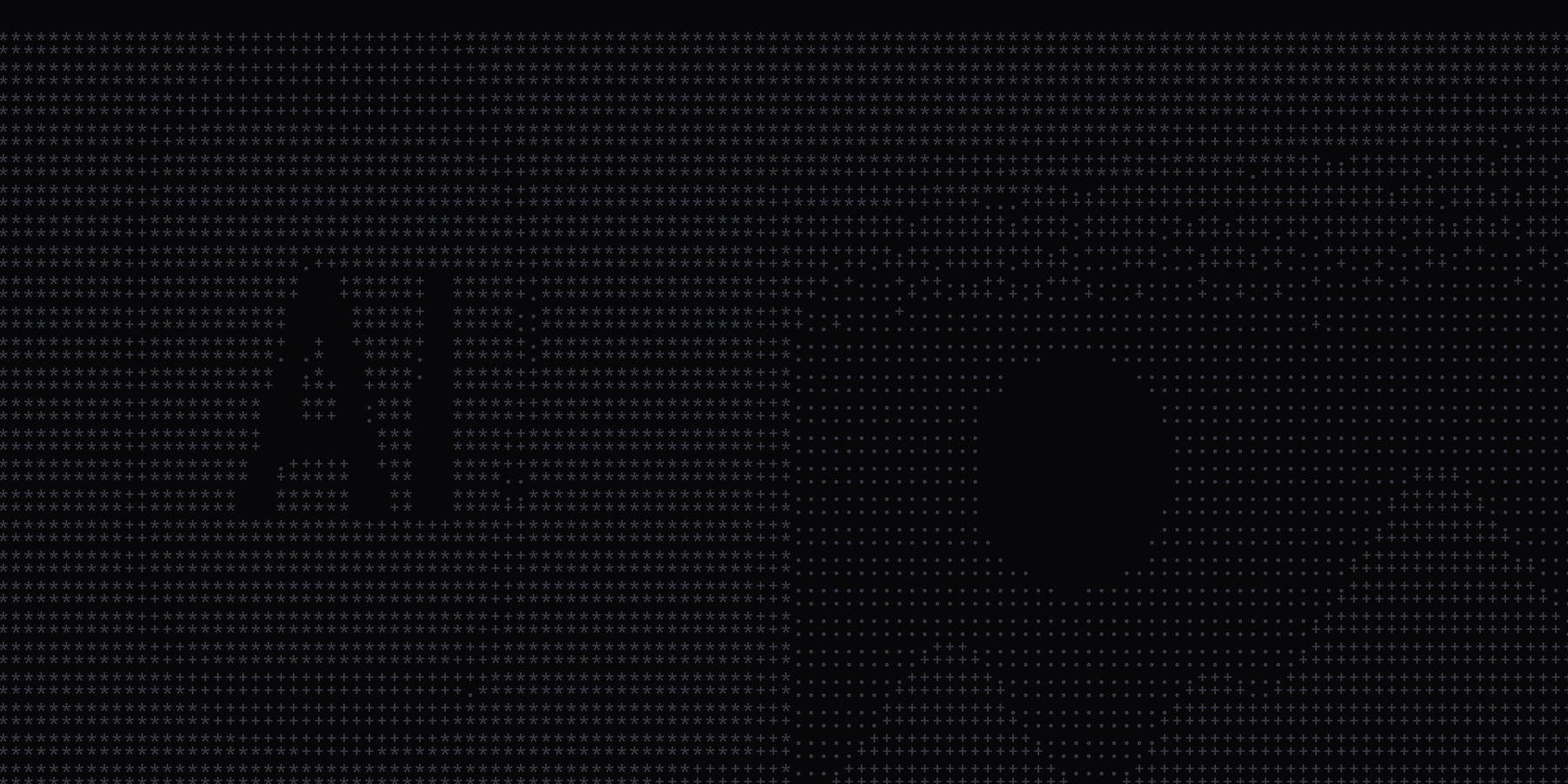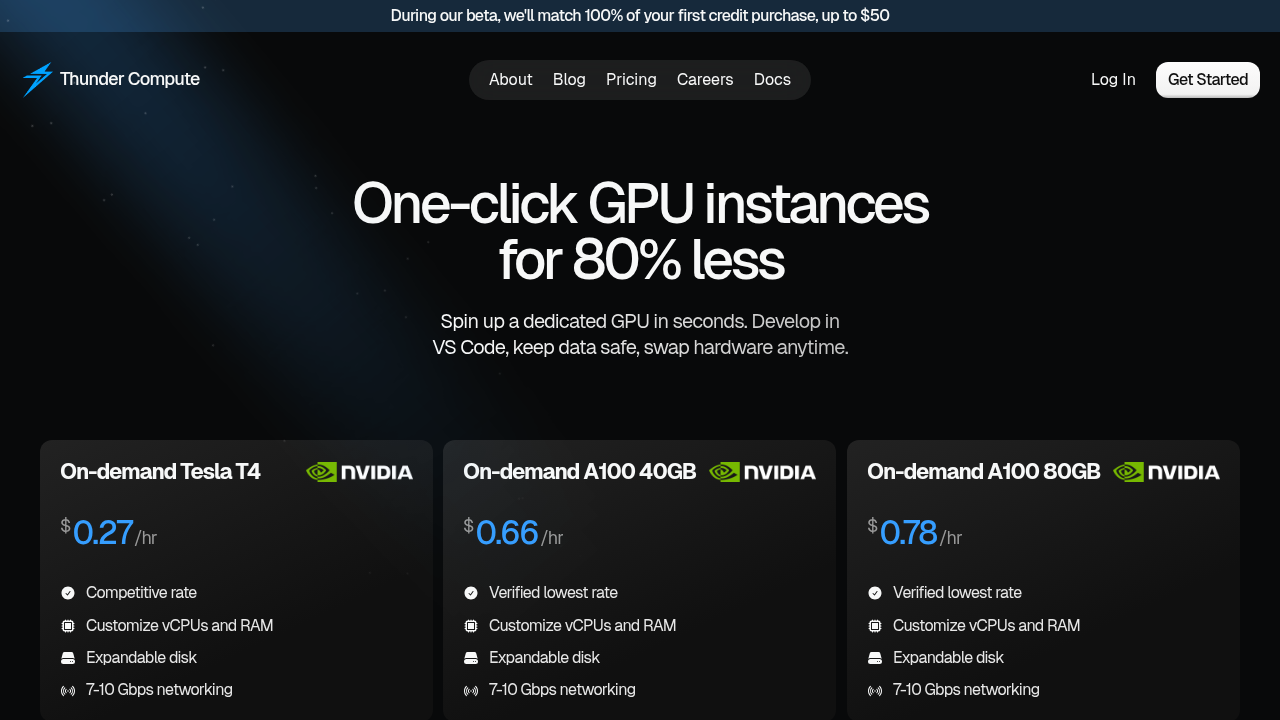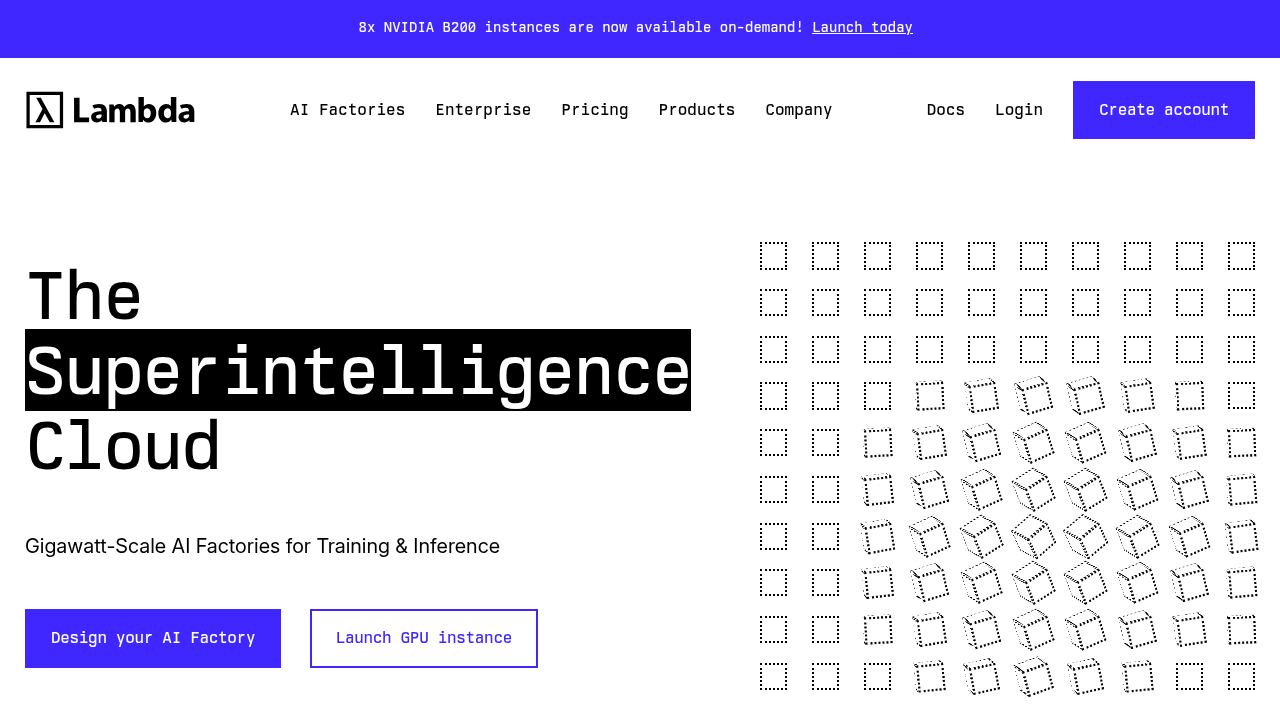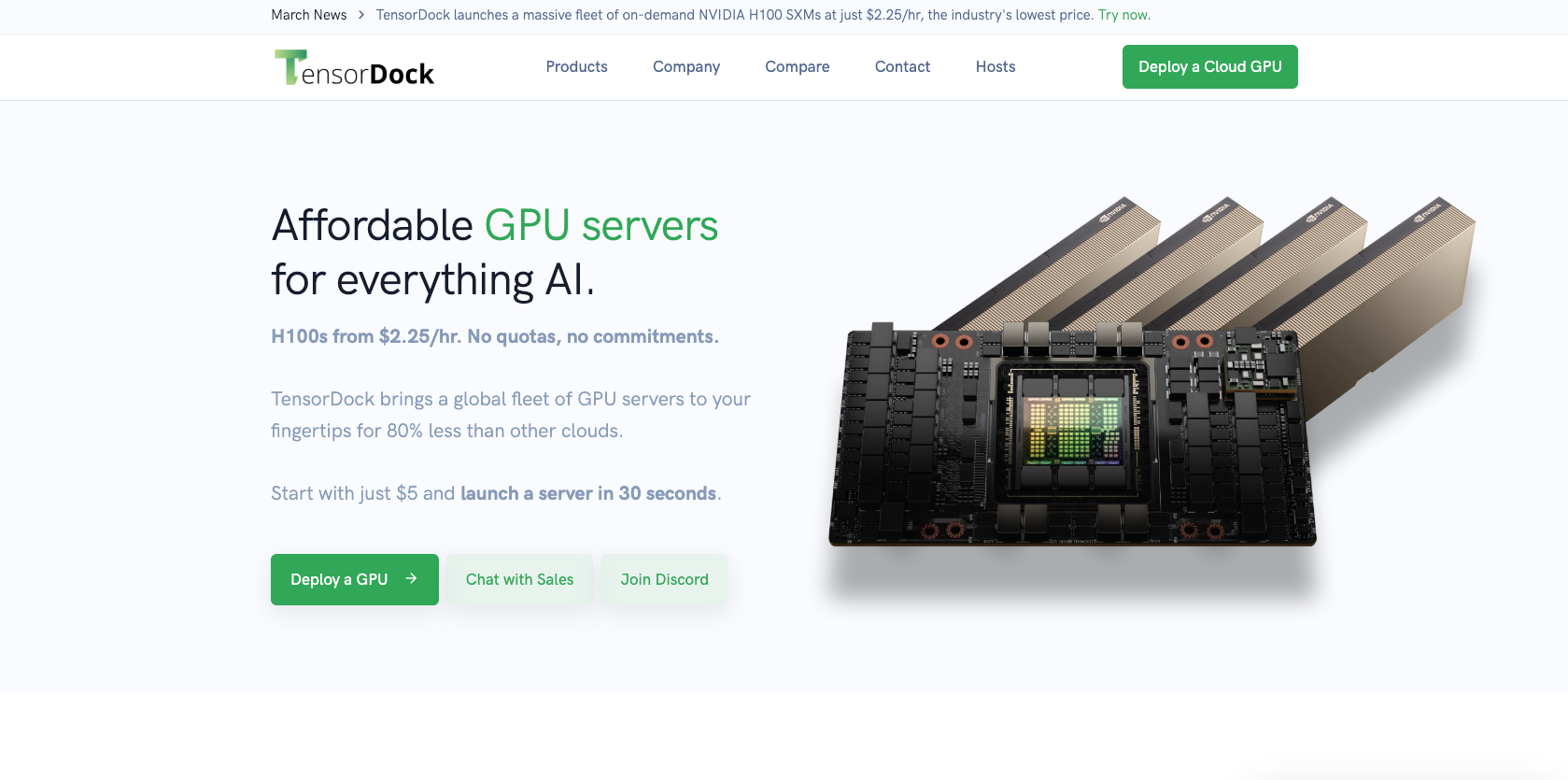Best Cloud GPUs for AI Art Generation and Diffusion Model Training (November 2025)

Most developers hit the same wall when training generative models: local GPUs either can't handle the memory requirements or take forever to finish training runs. Renting cloud GPUs for AI art generation fixes both problems, but the options out there vary wildly in pricing and usability. We tested each major provider to see which ones are worth your time and money for diffusion model and GAN development.
TLDR:
A100-80GB GPUs cost $0.78/hr at Thunder Compute vs $1.64-3.10/hr at other providers for training diffusion models and GANs.
You need anywhere between 16-80GB VRAM for generative AI training; per-minute billing saves 40% on costs during iterative development.
VS Code integration and persistent storage eliminate manual SSH setup and environment configuration across training runs.
Thunder Compute offers one-click GPU switching and instant instance launch with built-in framework support for PyTorch and Diffusers.
Why Cloud GPUs Make Sense for AI Art Generation
Generative AI requires a lot of processing power. GPUs are designed for parallel processing, allowing them to perform the massive, repetitive calculations needed to run complex models like diffusion models, such as Stable Diffusion, or generative adversarial networks models far faster than a CPU. But training these models locally often means investing $10,000+ in hardware, dealing with cooling and power requirements, and facing limitations when scaling. That's why many developers rent GPUs instead of buying their own.
That's where cloud GPUs come in. These are virtual machines with dedicated graphics processing units available for rent by the hour. You access high-end GPUs like NVIDIA A100s or H100s through a web interface or command line instead of purchasing and maintaining expensive hardware. Cloud GPU instances let you spin up computing power in seconds, run your training job, and shut down when finished. You only pay for what you use.
How we ranked Cloud GPUs for AI Art Generation
We tested each provider based on five criteria that directly impact generative AI development:
GPU memory capacity: Training diffusion models and GANs requires 16-80GB of VRAM depending on batch size and output resolution. Providers with A100 and H100 access ranked higher.
Hourly pricing: On-demand GPU costs compound quickly when training runs span days or weeks. We compared public rates across all providers.
Setup speed: We measured time from account creation to executing your first training script, including instance launch and environment configuration.
Framework compatibility: Out-of-the-box support for PyTorch, TensorFlow, Diffusers, and ComfyUI without manual dependency resolution.
Persistent storage: Whether datasets and model checkpoints survive instance restarts without requiring manual backup workflows.
Best Overall Cloud GPU for AI Art Generation: Thunder Compute

Thunder Compute offers A100-80GB instances starting at $0.78/hr compared to $1.64/hr+ at competing providers. You get identical hardware for training Stable Diffusion models or GANs at half the cost. With Thunder Compute, you can launch an instance and connect through the VS Code extension in seconds with zero manual configuration. No SSH keys, no CUDA installation, no environment setup required. Persistent storage preserves your datasets, checkpoints, and installed dependencies across stops and starts. And, you can even switch GPU types without rebuilding your environment: Prototype on a T4, then move to an A100 for full training runs while keeping your code and data setup intact.
Lambda Labs

Lambda Labs provides GPU clusters and colocation services for enterprise-scale AI infrastructure. Their focus is multi-GPU configurations for distributed training, not single-developer workloads. They offer multi-GPU cluster configurations for distributed training, enterprise colocation for hybrid cloud deployments, and on-demand access to high-end GPU hardware.
Lambda targets enterprise customers with budgets and technical requirements that don't match individual developers or small teams prototyping generative AI projects. If you're training a custom Stable Diffusion model or experimenting with GAN architectures, you likely need 1-4 GPUs with quick iteration cycles. Lambda's cluster-first approach adds unnecessary complexity and cost for these workflows. The service works well if you need dozens of GPUs coordinated across nodes for training massive models.
RunPod

RunPod offers containerized GPU environments with serverless options and persistent instances. For detailed RunPod pricing information, their recent price cuts brought serverless costs down 40% and secure cloud instances down 18%, with entry pricing at $0.22/hr.
They offer a number of key features including serverless GPU instances that bill only during active compute time; pre-built containers for PyTorch, TensorFlow, and Stable Diffusion workflows; and templates for quick deployment of common AI frameworks.
But, persistent storage requires attaching separate network volumes, adding complexity compared to built-in solutions. You'll spend time configuring volumes and managing mounts before training.
Vast.ai

Vast.ai connects you with GPU resources through a marketplace of individual providers. You browse available machines from different hosts, bid on spot instances, and access hardware at prices below dedicated cloud providers. But, while being inherently flexible, this distributed marketplace creates reliability issues. Instances can terminate unexpectedly when providers pull capacity, and uptime varies between hosts. You'll handle environment setup manually since instances are typically ephemeral without built-in persistent storage.
In short, Vast.ai works if you need the cheapest GPU access for short experiments you can restart easily. For multi-day training runs or projects requiring consistent development environments, the instability creates friction that undermines the cost savings.
Nebius

Nebius provides GPU cloud infrastructure with enterprise-grade features and support alongside competitors like Lambda and CoreWeave. Some of the features Nebius includes are enterprise-grade CPU cloud infrastructure with professional support and SLAs; integration with other cloud services for organizations with existing cloud dependencies; and scalable GPU configurations across different workload requirements.
Nebius targets enterprise customers with higher service costs compared to specialized GPU providers. Their pricing reflects premium support and reliability guarantees that large organizations require, creating a cost barrier for individual developers and small teams working on diffusion model architectures or custom GAN training.
TensorDock

TensorDock offers marketplace pricing (spot market) with H100 SXM5 instances starting at $2.25/hour with no quotas or spending limits. The service provides dedicated GPU instances with enterprise security features and a 99.99% uptime standard across global locations.
But, spot pricing varies by availability. H100s drop to $1.91/hour on spot instances, while RTX 4090s start at $0.35/hour. The inconsistent spot market requires monitoring availability and adjusting workloads based on what's accessible. TensorDock also lacks integrated development tools. You'll handle SSH configuration, environment setup, and storage management manually, creating overhead that slows experimentation for generative AI workflows.
Feature Comparison Table of Cloud GPUs for AI Art Generation
Keep in mind that per-minute billing saves roughly 40% on costs for bursty workloads compared to hourly increments, particularly during iterative development cycles where you frequently start and stop instances.
Why Thunder Compute is the best Cloud GPU for AI Art Generation
Training a diffusion model requires substantial GPU memory and compute time. When iterating on model architectures or fine-tuning Stable Diffusion models, GPU costs accumulate fast.
Thunder Compute offers A100-80GB instances at $0.78/hr compared to AWS's $3.10/hr for identical hardware. The VS Code integration connects you to instances in under 30 seconds without configuring environments or managing SSH keys. And, you can scale from T4 to A100 GPUs as memory requirements change without rebuilding your setup.
FAQ
How much GPU memory do I need for training diffusion models?
Training Stable Diffusion models typically requires 16-24GB VRAM for basic fine-tuning, while training from scratch or working with higher resolutions needs 40-80GB. An A100-80GB handles most generative AI workflows including large batch sizes and high-resolution outputs.
What's the cost difference between prototyping and production GPU instances?
Thunder Compute's A100-80GB instances cost $0.78/hr compared to $1.64/hr on RunPod and $3.10/hr on AWS. For a week-long training run, that's $131 on Thunder Compute versus $274 on RunPod or $520 on AWS for identical hardware.
Can I switch between different GPU types without losing my work?
Yes, Thunder Compute lets you change GPU types while preserving your entire environment. Start prototyping on a T4, then move to an A100 for full training runs without reconfiguring your code, datasets, or installed dependencies.
How long does it take to start training after creating an account?
With Thunder Compute, you can launch an instance and start training in under 30 seconds through the VS Code extension. Other providers require 5-15 minutes for manual SSH configuration, CUDA installation, and environment setup.
Why do some cheap GPU providers have reliability issues?
Marketplace providers like Vast.ai connect you with individual hosts who can pull capacity unexpectedly, terminating your instances mid-training. Dedicated providers source GPUs from stable data centers, preventing interruptions during multi-day training runs.
Final thoughts on cloud GPUs for generative AI projects
Your creative AI development workflow needs fast iteration cycles and predictable costs. You can't be bogged down with unreliable capacity, marketplaces you have to monitor continuously to get the best price, or dealing with the complexity of environment setup when all you want to do is start training. By selecting the right provider, one which balances competitive per-hour pricing with developer-focused tools and the flexibility to upgrade or downgrade hardware without losing your data, you can start training today and scale effortlessly as your projects demand more compute power.